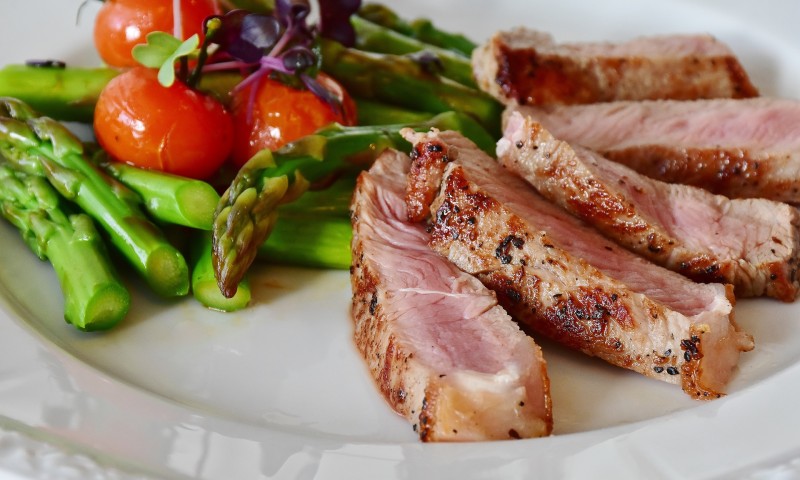What’s this Paleo plan really all about? If you haven’t heard, this diet is one of the latest and greatest nutrition plans that everyone seems to be following these days.
Paleo takes us back —way back to cave men, to be exact. Some people refer to this diet as “the cave man diet,” and that does make sense as you do just that – eat what the cave men ate. This diet is full of whole, unprocessed foods that resemble what they look like in nature (no fruit roll-ups here!). When we think of cave men, most of us envision them with a healthy weight and without chronic diseases such as diabetes that a great number of Americans struggle with today. Some brief studies have shown that the health benefits of following a Paleo plan can increase weight-loss, improve blood glucose levels and improve lipid profiles.
Now, What Do I Eat on the Paleo Diet?
The Paleo diet is a pretty simple “eat this, not that” plan. Here is a brief overview:
- Eat this: Grass-fed meats, fish, fresh vegetables (mostly non-starchy ones), fresh fruit, eggs, healthy oils (olive, walnut, flaxseed, avocado, coconut) and nuts.
- But not that: Grains, legumes, dairy, sugar, potatoes, processed foods, salt, soda, juices, snack foods and corn syrup.
But Think about a Few Things.
- The plan is simple: You can find a very complete list of foods that you can and can’t eat on this plan. There is not an emphasis on calorie counting or portion control, which is a struggle for many and can eventually lead to the end of their plan. This is simple…just eat what’s on the list.
- Weight-loss: Will you lose weight on this? Think about it…cutting out carbs, snack foods, sugar and snacks will result in weight-loss for just about anyone. This isn’t a magic diet – it’s just cutting out many of the foods we all tend to overeat.
- Prep time: This plan allows for nothing processed, which will lead to a lot of prep time in the kitchen. It may take you a while to get the hang of things. A friend of mine following the Paleo plan allowed extra time in the kitchen each week to make her own mayonnaise. Carve out some extra time at the grocery store and for food preparation.
And the final word is this:
From a Registered Dietitian’s perspective, is this a great diet to follow? It certainly has its high points. Who can argue with protein, vegetables and fruit without all of the extra processed food? Eliminating dairy and carbohydrates long-term, however, can be tough to follow. Strictly eliminating a long list of food can lead to short-term compliance. By limiting certain food groups, you also limit certain nutrients. For example, this diet can fall short in calcium and B vitamins. A supplement would be needed if this is followed long-term.
The bottom line is – there are many different plans that work for many different people. If this one is for you, go for it!
 About the Author:
About the Author:
Sarah Muntel, RD, is the Bariatric Coordinator at Community Bariatric Surgeons in Indianapolis, IN. She has 15 years of experience working with bariatric patients and loves to watch people as they change their lives and improve their health. Her favorite part of her job is her weekly support group. In her free time, Sarah enjoys spending time with her husband and three children.





